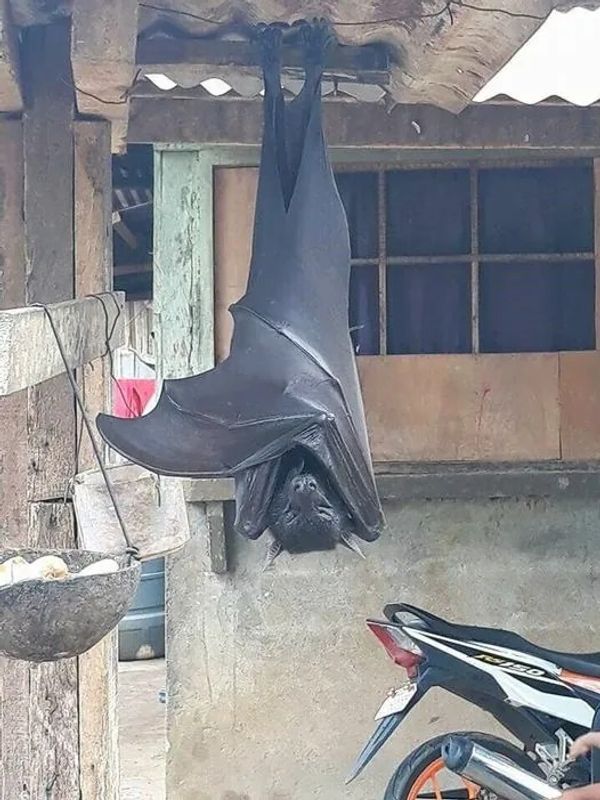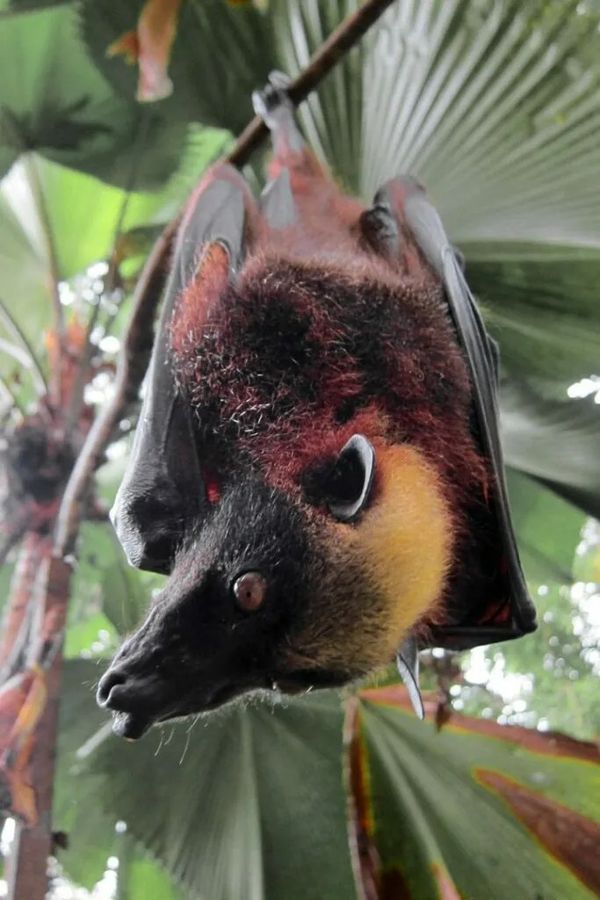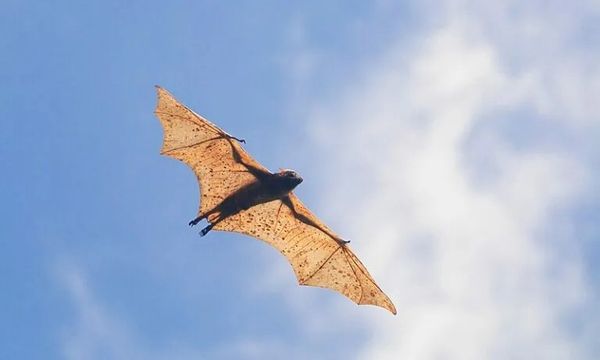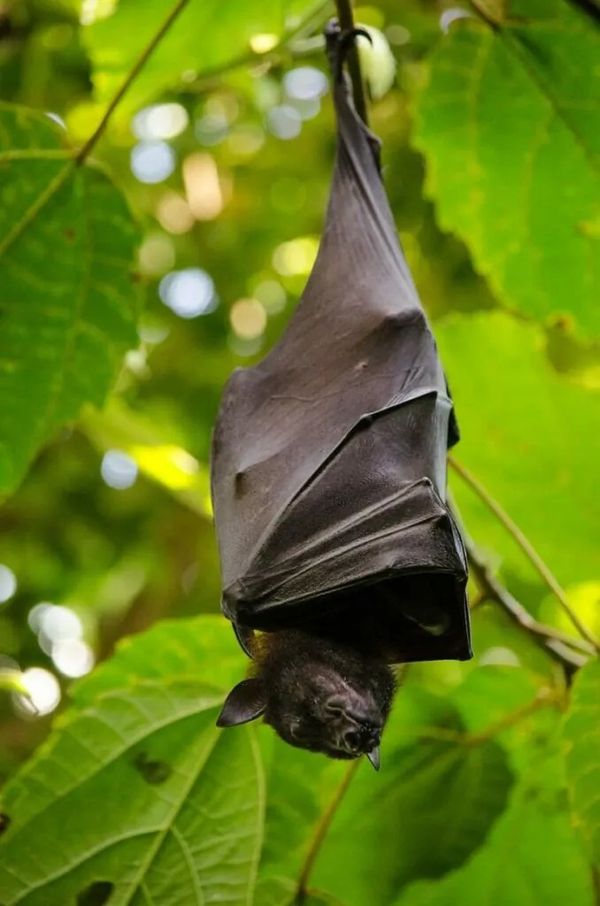
When you take a look at the golden-crowned bat, with its wide wingspan and hairy body, it’s easy to be intimidated. Its appearance, resembling a vampire with its stretchy black cape, adds to the aura of fear. However, don’t let their appearance fool you – these bats are delicate creatures just trying to survive amidst deforestation and hunting.
It’s unfortunate that these harmless fruit-eating megabats, unique to the Philippines, are often hunted illegally for sport or food. Human encroachment on their habitat has also forced them to the brink of extinction. We must raise awareness and take action to save these remarkable creatures.

Initially, when viral photographs of these bats surfaced, they were mistakenly referred to as “human-sized” bats, causing panic and confusion. Let’s clarify that these bats are not actually “human-sized.” In comparison, they are closer in size to a small child than an average adult human.
The enormous golden-crowned bat, with a wingspan of about 5-foot-6, is one of the largest bat species in the world. It weighs less than 3 pounds and has a body length ranging from seven inches to 11.4 inches. With its fluffy golden crown, it’s a majestic sight to behold.

While there are other varieties of flying fox megabats found in Asia, Africa, and Australia, the golden-crowned flying fox (Acerodon jubatus) is unique to the Philippine jungles. These bats often live in colonies, sometimes with up to 10,000 members, hanging from trees during the day and searching for food at night. They have adapted to use sight and scent for navigation, unlike other bats that rely on echolocation.
Not only do these bats play a vital role in the ecosystem by pollinating and dispersing fig seeds, but they also contribute to reforestation efforts in the Philippines. Unfortunately, the destruction caused by human activities outweighs their efforts. More than 90% of the old-growth forests in the country have been destroyed, leading to a rapid decline in the golden-crowned bat population.

Since 1986, the number of golden-crowned bats has decreased by 50%. Deforestation and hunting for recreation, commerce, and personal consumption are the main drivers of this decline. Despite being protected under the Philippine Wildlife Resources Conservation and Protection Act of 2001, enforcement of the law is lacking.
Hunters often engage in mass-killing, shooting the bats while they sleep, a cruel and senseless act. Even in protected areas, these bats are not safe. It is heartbreaking to see injured bats still gripping onto branches after they are killed, unable to drop.
Though these bats face significant threats from humans, they are not afraid of us. They can be found near cities, perched on utility poles, or even in inhabited places where they feel at ease. They have the intelligence to distinguish between safe and unsafe environments, seeking refuge in inaccessible areas.
Research has shown that these bats are incredibly intelligent and quick learners. In one study, bats raised by humans were taught to pull levers in exchange for rewards. Even after three and a half years, when placed back in the experimental chamber, they immediately remembered to remove the levers for their rewards. They exhibit levels of intelligence comparable to dogs.

It’s important to note that only a small fraction of bats, three species out of 1,300, feed on human blood. The golden-crowned flying foxes, despite their creepy appearance, are harmless. They deserve our respect and protection.
It’s disheartening to witness the slaughter of these innocent animals and the destruction of their habitat due to deforestation. We must raise awareness and take a stand to protect these remarkable creatures. Spread the word about this endangered species and join the fight to save them from extinction.




